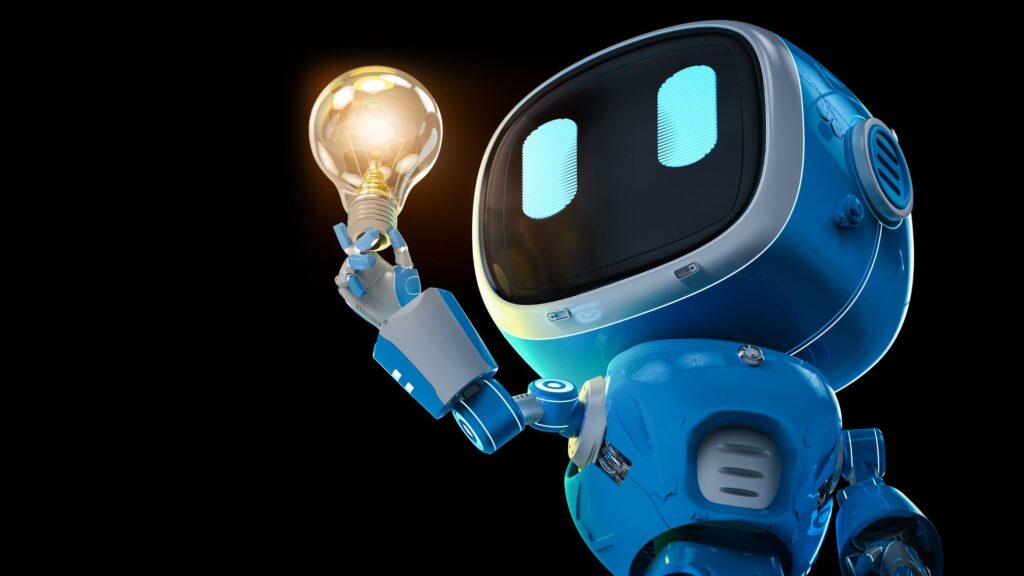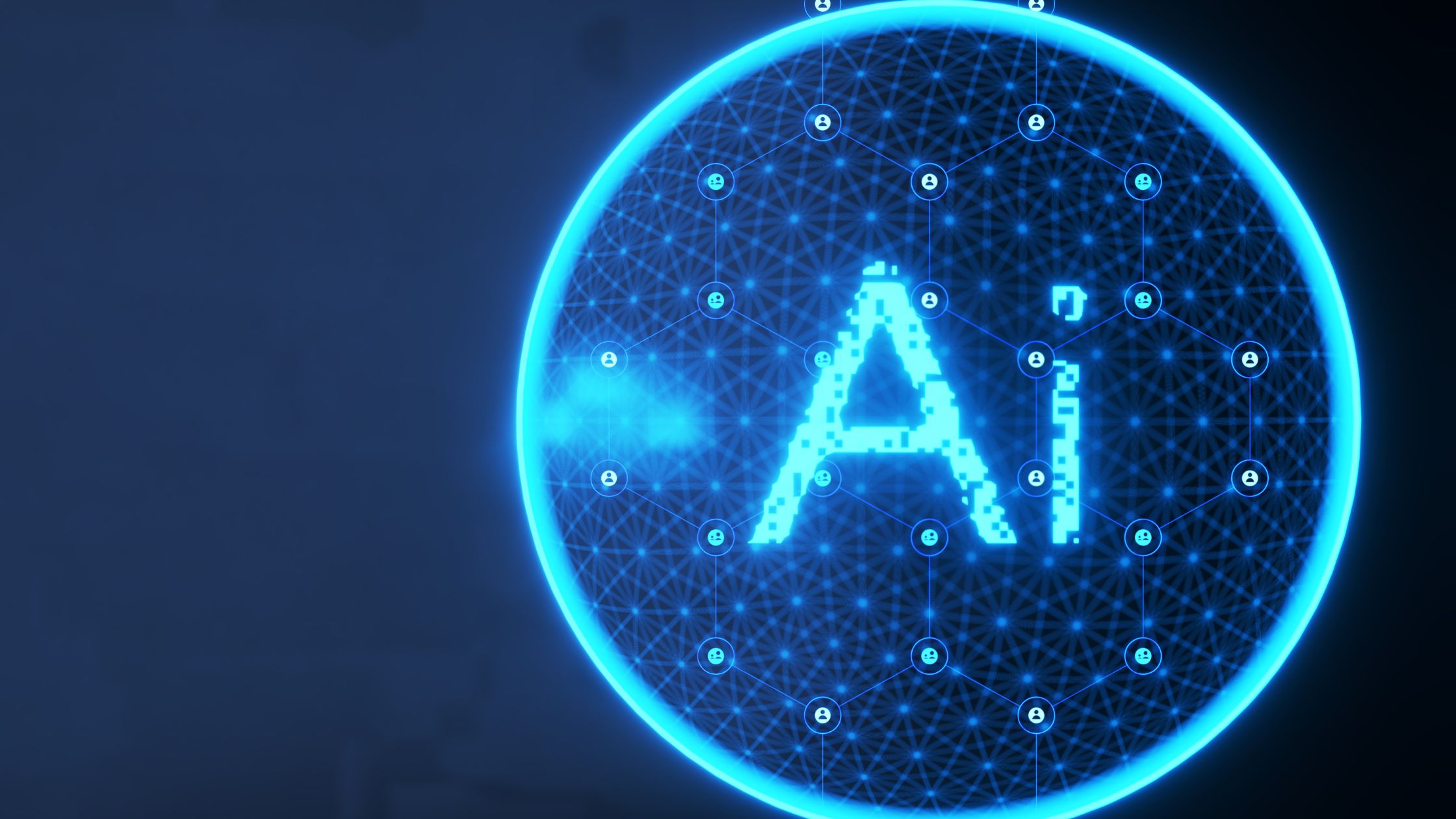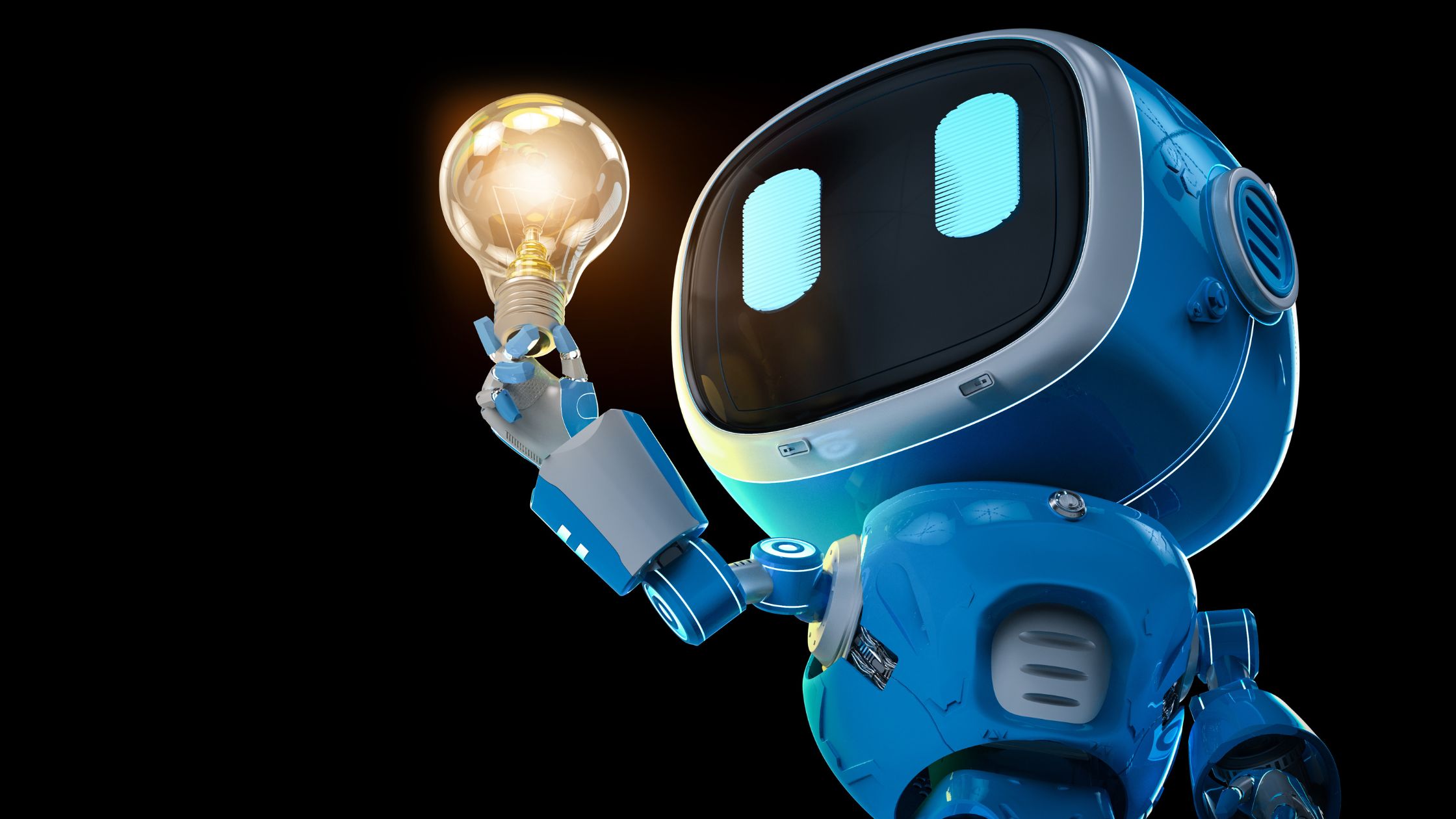
HomeWorkify stands out as a revolutionary tool in the realm of academic assistance. Unlike its counterparts, HomeWorkify is driven by a noble cause – providing free…

Table of Contents
The term “artificial intelligence” (AI) is used all the time in today’s digital world. It has changed industries, sped up technology, and even affected our daily lives. AI is basically machines that try to think and act like humans. It includes a lot of different techniques and ways of doing things that are meant to copy cognitive functions.
Plus, it’s fun to learn about artificial intelligence (AI), which is becoming more and more important in today’s world. . This article will talk about AI’s basics, such as what it is and why it’s important to know them. It will also give you an idea of the main ideas and applications that will be talked about. Whether you’re new to AI or just want to learn more, let’s go on a journey to explore its mysteries and see how it can change the world.
Artificial Intelligence (AI) is a multifaceted field that encompasses a rich history, diverse applications, and evolving capabilities. To appreciate its current significance, it’s essential to explore its roots and development over time.

The journey of AI traces back to the mid-20th century, marked by seminal milestones and breakthroughs that laid the foundation for its modern manifestations. One of the earliest instances can be attributed to Alan Turing’s groundbreaking work on computational intelligence during World War II, where he conceived the concept of a “universal machine” capable of simulating any human task. Fast forward to the 1950s and 60s, and pioneers like John McCarthy and Marvin Minsky spearheaded the formalization of AI as a distinct discipline, paving the way for the first AI programs and the birth of the term “artificial intelligence.”
Over subsequent decades, AI experienced periods of rapid progress and setbacks, characterized by waves of enthusiasm followed by “AI winters” of disillusionment. However, each cycle of advancement brought forth novel approaches and paradigms, propelling AI closer to its ultimate goal of human-like intelligence.
At its core, the essence of AI lies in the emulation of human cognitive functions such as learning, reasoning, and problem-solving using computational methods. It encompasses a broad spectrum of techniques, ranging from symbolic reasoning and expert systems to statistical modeling and machine learning.
Machine learning, a subset of AI, has emerged as a dominant force driving recent advancements, enabling computers to learn from data and improve performance over time without explicit programming. This capacity for “learning” forms the cornerstone of many contemporary AI applications, from natural language processing and image recognition to autonomous vehicles and personalized recommendations.
In understanding AI, it’s crucial to distinguish between narrow AI, also known as weak AI, and general AI, or strong AI. Narrow AI refers to systems designed for specific tasks or domains, exhibiting intelligence limited to predefined objectives. Examples abound in our daily lives, from virtual assistants like Siri and Alexa to spam filters and recommendation algorithms.
On the other hand, general AI aspires to replicate the breadth and depth of human intelligence across diverse contexts, possessing the ability to understand, learn, and adapt in novel situations autonomously. While still largely aspirational, the pursuit of general AI represents the frontier of AI research, with profound implications for society and the human condition.
By delving into the historical underpinnings, conceptual frameworks, and varying manifestations of AI, we lay the groundwork for a deeper appreciation of its complexities and potentials. In the subsequent sections, we’ll explore key concepts and applications that illuminate the workings of this fascinating field.
Examples of narrow AI include:
1. Voice assistants digital such as Siri and Alexa
2. Self-driving vehicles
3. Systems for facial recognition
4. Platform recommendation systems, such as those found on Amazon and Netflix
5. Chatbot customer support applications
6. Models for predictive maintenance
General artificial intelligence is still in its infancy, but possible applications include:
1. SaaSophisticated chatbots with the capacity to comprehend and react to an extensive spectrum of human sentiments and situations
2. Autonomous vehicles capable of real-time decision-making and navigation through complex environments devoid of human supervision
3. Artificial intelligence systems capable of inventive tasks, including music composition and art creation
As we delve deeper into the realm of artificial intelligence, it’s essential to grasp the key concepts and methodologies that underpin its functionality and applications. From machine learning algorithms to neural networks and deep learning architectures, these fundamental concepts form the backbone of AI’s capabilities and innovations.

Machine learning lies at the heart of modern AI, empowering systems to learn from data and improve their performance over time without explicit programming. At its core, machine learning involves the development of algorithms that enable computers to identify patterns and make predictions based on empirical evidence.
Machine learning algorithms can be broadly categorized into supervised learning, unsupervised learning, and reinforcement learning. In supervised learning, the algorithm is trained on labeled data, where each input is associated with a corresponding output or “label.” This enables the algorithm to learn the mapping between inputs and outputs, making predictions on unseen data based on learned patterns.
In contrast, unsupervised learning involves training algorithms on unlabeled data, where the objective is to uncover underlying structures or patterns within the data itself. Clustering algorithms, dimensionality reduction techniques, and generative models are common examples of unsupervised learning approaches, used for tasks such as grouping similar data points or generating new samples from a given distribution.
Neural networks, inspired by the structure and functioning of the human brain, have emerged as a powerful paradigm for solving complex problems in AI. Comprising interconnected nodes or “neurons” organized in layers, neural networks can learn intricate patterns and relationships within data, enabling tasks such as image recognition, natural language processing, and decision making.
At its simplest, a neural network consists of an input layer, one or more hidden layers, and an output layer. Each neuron within the network receives inputs, applies a transformation using learned weights and biases, and passes the result to subsequent layers. Through a process known as backpropagation, neural networks adjust their parameters iteratively during training to minimize errors and optimize performance.
The versatility and adaptability of neural networks have made them indispensable tools in AI development, driving advancements in diverse domains. From convolutional neural networks (CNNs) for image analysis to recurrent neural networks (RNNs) for sequence modeling, neural network architectures continue to push the boundaries of AI capabilities, enabling innovations in fields such as healthcare, finance, and autonomous systems.
Deep learning represents a subset of machine learning focused on neural networks with multiple hidden layers, capable of learning hierarchical representations of data. This hierarchical feature abstraction enables deep learning models to capture intricate patterns and nuances within complex datasets, achieving state-of-the-art performance across a wide range of tasks.
Deep learning algorithms leverage deep neural networks to extract high-level features from raw data, enabling tasks such as image classification, speech recognition, and natural language understanding. By hierarchically composing simpler features into more abstract representations, deep learning models can discern subtle patterns and variations, leading to superior performance in challenging real-world scenarios.
The applications of deep learning in AI are vast and diverse, spanning industries and domains. From autonomous vehicles and medical diagnosis to personalized recommendations and virtual assistants, deep learning models are driving transformative innovations and reshaping the way we interact with technology. For example, companies like Google utilize deep learning algorithms to enhance search results and improve language translation accuracy, while healthcare institutions leverage deep learning for early disease detection and treatment planning.
By understanding these foundational concepts in AI, we gain insights into the inner workings of intelligent systems and the potential they hold for solving complex problems and driving innovation. In the following sections, we’ll explore real-world applications and practical examples that demonstrate the power and versatility of these concepts in action.
Artificial intelligence (AI) has transcended the realm of theoretical concepts to become an integral part of our everyday lives and industrial landscapes. From enhancing convenience and efficiency to driving innovation and transformation, AI applications span a diverse array of domains, revolutionizing how we interact with technology and perceive the world around us.

In the realm of everyday life, AI manifests in various forms, enriching our experiences and streamlining our interactions with digital devices and services. Two prominent examples include virtual assistants and recommendation systems.
Virtual assistants such as Siri, Alexa, and Google Assistant have become ubiquitous fixtures in our homes and smartphones, leveraging AI algorithms to understand natural language queries, execute commands, and provide personalized assistance. Whether setting reminders, answering questions, or controlling smart home devices, virtual assistants epitomize the integration of AI into our daily routines, enhancing productivity and convenience.
Recommendation systems wield AI algorithms to analyze user preferences, behaviors, and historical data, delivering personalized recommendations for products, services, and content. From e-commerce platforms like Amazon and Netflix to music streaming services like Spotify, recommendation systems enable tailored user experiences, driving engagement, and satisfaction. By leveraging techniques such as collaborative filtering and content-based filtering, these systems anticipate user preferences and surface relevant recommendations, facilitating discovery and enhancing user satisfaction.
Beyond personal use, AI plays a pivotal role in reshaping industries and revolutionizing traditional business models, unlocking new opportunities for efficiency, innovation, and growth. Three key industries where AI is making significant inroads include healthcare, finance, and manufacturing.
In healthcare, AI-driven solutions are transforming patient care, diagnosis, and treatment, leveraging advanced algorithms to analyze medical imaging, predict disease risk, and optimize treatment plans. For example, AI-powered diagnostic systems can assist radiologists in interpreting medical images such as X-rays and MRIs, improving accuracy and efficiency. Additionally, AI algorithms can analyze vast amounts of patient data to identify patterns and trends, enabling early detection of diseases and personalized treatment recommendations.
The percentage of AI usage in healthcare varies depending on the context and the specific area of application. Here are the key statistics from the sources:
-86% of healthcare providers, life science companies, and technology vendors use AI technology
-94% of healthcare executives believe they have a duty to use AI responsibly
-50% of healthcare providers are currently using some form of AI technology in their practice
-The US has a 58% revenue share in the global AI in healthcare market
Statistics resources:
https://gitnux.org/ai-use-in-healthcare-statistics/
https://mspoweruser.com/ai-in-healthcare-statistics/
https://www.enterpriseappstoday.com/stats/ai-in-healthcare-statistics.html
https://binariks.com/blog/artificial-intelligence-ai-healthcare-market/
https://resources.freeagentcrm.com/ai-in-healthcare-statistics/
https://www.statista.com/topics/10011/ai-in-healthcare/
https://www.statista.com/statistics/1334826/ai-in-healthcare-market-size-worldwide/
In the finance sector, AI is revolutionizing processes such as risk assessment, fraud detection, and investment management, enabling financial institutions to mitigate risks, enhance operational efficiency, and deliver personalized services to clients. AI algorithms analyze vast datasets in real-time to detect fraudulent transactions, identify market trends, and optimize investment portfolios. From algorithmic trading strategies to robo-advisors, AI-powered solutions are reshaping the landscape of financial services, driving innovation and enabling more informed decision-making.
The adoption and usage of Artificial Intelligence (AI) in the finance sector are significant and growing. Here are the key statistics from the provided sources:
– In 2021, nearly half (49%) of financial services firms achieved full-scale AI deployment.
– 85% of financial firms report they are currently using AI.
– The global AI in finance market is predicted to grow at a Compound Annual Growth Rate (CAGR) of 23.37% from 2021 to 2028[1].
– AI has the potential to increase financial services revenues by 34%.
– By 2025, AI is expected to save the industry more than $1 trillion in operating costs.
– 77% of financial institutions have implemented or plan to implement AI for improved client communication.
– Fraud detection and anti-money laundering are two top use cases with 87% adoption rate among leaders in finance.
– AI-driven customized financial advice is expected to grow at a CAGR of 12.6% between 2021 and 2026.
– By 2022, AI technologies in the financial industry could reduce the need for lower-skilled jobs by over 50%.
– AI will be responsible for managing 26 trillion minutes of financial services customer service interactions by 2025.
– The adoption rate of AI in global finance business is expected to grow from 2022 to 2025[8].
– 39% of organizations currently use AI in the finance function, and 68% of finance organizations are using AI or plan to use the technology.
These statistics collectively indicate a robust and expanding role for AI in the finance sector, with a significant percentage of financial institutions already leveraging AI for various applications, from client communication and fraud detection to operational efficiencies and cost reductions.
Statistics resources:
https://zipdo.co/statistics/ai-in-finance-industry/
https://gitnux.org/ai-use-in-financial-services-statistics/
https://appinventiv.com/blog/ai-in-finance/
https://www.imf.org/en/Publications/fandd/issues/2023/12/AI-reverberations-across-finance-Kearns
https://builtin.com/artificial-intelligence/ai-finance-banking-applications-companies
https://biztechmagazine.com/article/2024/01/how-ai-used-financial-world-today
https://www.statista.com/statistics/1346736/ai-function-adoption-rates-business-finance/
In manufacturing, AI technologies such as robotics, predictive maintenance, and quality control are optimizing production processes, reducing costs, and improving product quality. AI-driven robotics systems automate repetitive tasks, streamline assembly lines, and enhance worker safety in manufacturing facilities. Predictive maintenance algorithms analyze equipment sensor data to anticipate potential failures and schedule maintenance proactively, minimizing downtime and optimizing productivity. Quality control systems leverage AI image recognition techniques to inspect and identify defects in manufactured products, ensuring adherence to stringent quality standards.
he search results provide various statistics regarding the use of AI in the manufacturing industry, but they do not offer a single, clear percentage that applies universally. Instead, they provide specific figures and predictions related to different aspects of AI adoption in manufacturing. Here are some of the key statistics from the sources:
– As of 2020, AI use cases in the manufacturing industry worldwide included 59% for quality control testing, 44% for predictive maintenance, 32% for supply chain management, and 29% for yield optimization.
– By 2024, it is predicted that 50% of manufacturing industries worldwide will use AI to automate data processing and analysis.
– Gartner predicted that by 2021, 20% of all manufacturers would have deployed AI-based automation to achieve large-scale standardization.
– Capgemini reported that 44% of organizations in the manufacturing sector are implementing AI prototypes.
– IDC predicted that by 2021, 60% of manufacturing supply chains would use AI to detect supply chain disruptions more effectively.
– The global AI in the manufacturing market is expected to exceed $4.2 billion by 2023.
– 29.7% of AI implementations in manufacturing are for maintaining machinery and production assets.
– The global artificial intelligence in manufacturing market size was valued at USD 1.82 billion in 2019 and is projected to reach USD 9.89 billion by 2027.
– The market is expected to grow at a compound annual growth rate (CAGR) of 24.2% by 2028.
– Manufacturers have reported a significant 50% reduction in production time through the implementation of AI.
– The global Artificial Intelligence In Manufacturing market size was valued at USD 1449.28 Million in 2022 and will reach USD 23295.36 Million in 2031, with a CAGR of 58.86% during 2022-2028.
– The Global Artificial Intelligence In Manufacturing Market size is estimated to be valued at USD 3.2 billion in 2023 and is anticipated to reach USD 20.8 billion by 2028, with a CAGR of 45.6% from 2019 to 2028.
– The market size of AI in the manufacturing sector is expected to exceed USD 2 billion by 2025, with an average annual growth of more than 40 percent from 2019.
– The global artificial intelligence (AI) in manufacturing market size was reached at USD 3.8 billion in 2022 and it is growing at a CAGR of 33.5% over the forecast period 2023 to 2032.
Statistics resources:
https://www.statista.com/statistics/1197949/ai-manufacturing-industry-use-case-worldwide/
https://zipdo.co/statistics/ai-in-manufacturing/
https://labelyourdata.com/articles/ai-in-manufacturing-industry
https://www.linkedin.com/pulse/artificial-intelligence-manufacturing-market-size-2f
https://www.fortunebusinessinsights.com/artificial-intelligence-ai-in-manufacturing-market-102824
https://www.precedenceresearch.com/artificial-intelligence-in-manufacturing-market
Looking ahead, the future of AI holds immense promise and potential, with emerging trends such as autonomous vehicles, AI-driven personalized medicine, and human-AI collaboration poised to reshape industries and societies. Autonomous vehicles represent a paradigm shift in transportation, leveraging AI algorithms to navigate complex environments and enhance safety on roads. In healthcare, AI-powered predictive analytics and precision medicine hold the promise of revolutionizing disease prevention, diagnosis, and treatment, ushering in an era of personalized healthcare tailored to individual patient needs. Furthermore, the integration of AI with human labor holds the potential to augment human capabilities, enabling collaborative workflows and unlocking new frontiers of innovation and creativity.
By exploring these real-world applications and future trends, we gain insights into the transformative potential of AI and the myriad opportunities it presents for enhancing our lives and shaping the future. In the subsequent section, we’ll delve into the challenges and ethical considerations associated with the widespread adoption of AI, underscoring the importance of responsible AI development and deployment.
As artificial intelligence (AI) continues to proliferate across industries and domains, it brings with it a host of challenges and ethical considerations that must be carefully addressed to ensure responsible development and deployment. From biases in algorithms to concerns about privacy and the societal impact of automation, navigating the ethical landscape of AI requires vigilant oversight and proactive measures to mitigate risks and safeguard against unintended consequences.

One of the foremost challenges in AI revolves around biases inherent in data and algorithms, leading to unfair or discriminatory outcomes. Biases can manifest in various forms, including racial, gender, or socioeconomic biases, reflecting historical inequalities encoded in training data or implicit assumptions within algorithmic models. For example, facial recognition systems trained on predominantly white faces may exhibit higher error rates for individuals with darker skin tones, perpetuating racial biases and exacerbating disparities in policing and surveillance. Addressing bias and promoting fairness in AI requires robust data collection practices, transparent algorithmic decision-making processes, and ongoing monitoring and evaluation to identify and mitigate biases.
With the proliferation of AI-driven technologies and the increasing collection and analysis of personal data, privacy concerns have become a prominent issue in the AI landscape. AI algorithms often rely on vast amounts of data to train models and make predictions, raising questions about data ownership, consent, and surveillance. For instance, AI-powered recommendation systems and targeted advertising algorithms may infringe on user privacy by tracking online behaviors and preferences without explicit consent. Additionally, advancements in AI-driven surveillance technologies raise concerns about the erosion of privacy rights and civil liberties, posing risks to individual autonomy and freedom. Safeguarding privacy in the age of AI necessitates robust data protection regulations, transparency in data collection and usage practices, and mechanisms for empowering users to control their personal information.
The rise of automation driven by AI technologies has sparked concerns about the potential for widespread job displacement and economic disruption. As AI-powered systems automate routine tasks and augment human labor in various industries, there is a risk of job loss for workers whose roles are susceptible to automation. For example, advances in robotics and AI-driven manufacturing processes have led to the displacement of workers in factories and warehouses, raising questions about the future of employment in an increasingly automated world. Addressing the challenges of unemployment and job displacement requires proactive measures such as reskilling and upskilling initiatives, investment in education and training programs, and policies aimed at fostering inclusive economic growth and workforce development. Additionally, exploring alternative models such as universal basic income (UBI) may provide a safety net for individuals affected by automation-induced job losses, ensuring economic security and social stability in the face of technological disruption.
By confronting these challenges and ethical considerations head-on, we can foster a more responsible and equitable AI ecosystem that maximizes the benefits of technology while minimizing potential harms. In the following section, we’ll explore avenues for learning more about AI and engaging in informed discussions about its implications for society and the future.
As the field of artificial intelligence (AI) continues to evolve and expand, the demand for knowledge and expertise in this domain has never been greater. Whether you’re a novice looking to explore the basics of AI or a seasoned professional seeking to deepen your understanding, there are numerous avenues for learning and engagement available. From online courses and tutorials to books and hands-on projects, here are some recommended resources to help you embark on your journey of AI discovery.

Online courses and tutorials offer a convenient and accessible way to learn about the basics of artificial intelligence from the comfort of your own home. Platforms such as Coursera, Udacity, and edX offer a wide range of AI courses taught by leading experts in the field, covering topics such as machine learning, neural networks, and deep learning. These courses typically include video lectures, interactive quizzes, and hands-on assignments to reinforce learning and practical application. Additionally, many courses offer the flexibility of self-paced learning, allowing you to progress at your own pace and delve deeper into topics of interest.
Books remain an invaluable source of knowledge and insight in the realm of artificial intelligence, providing in-depth coverage of theoretical concepts, practical techniques, and real-world applications. Whether you’re looking for introductory texts or advanced reference materials, there are numerous AI books available to suit every level of expertise. Some recommended titles include “Artificial Intelligence: A Modern Approach” by Stuart Russell and Peter Norvig, “Deep Learning” by Ian Goodfellow, Yoshua Bengio, and Aaron Courville, and “Hands-On Machine Learning with Scikit-Learn, Keras, and TensorFlow” by Aurélien Géron. Additionally, online resources such as arXiv, Medium, and Towards Data Science offer a wealth of articles, tutorials, and research papers on various AI topics, providing valuable insights and perspectives from the AI community.
Hands-on projects and experiments offer a practical way to apply theoretical knowledge and gain hands-on experience with AI concepts and techniques. Whether you’re building a simple machine learning model or developing a complex neural network architecture, engaging in hands-on projects can help reinforce learning, foster creativity, and build practical skills. Platforms such as Kaggle and GitHub offer a wealth of datasets, code repositories, and project ideas to inspire and guide your exploration. Additionally, participating in AI competitions and hackathons can provide valuable opportunities to collaborate with peers, showcase your skills, and contribute to real-world problem-solving.
By leveraging these diverse resources and engaging in continuous learning and experimentation, you can deepen your understanding of the basics of artificial intelligence and stay abreast of the latest developments in this dynamic and rapidly evolving field. Whether you’re pursuing AI as a career path or simply exploring out of curiosity, the journey of discovery awaits, offering endless opportunities for growth, exploration, and innovation.
In conclusion, we’ve embarked on a journey through the basics of artificial intelligence, uncovering its definitions, applications, challenges, and ethical considerations. From understanding the history and key concepts of AI to exploring its diverse applications in everyday life and industries, we’ve glimpsed the transformative potential of this revolutionary technology. However, our exploration doesn’t end here; it’s merely the beginning of a lifelong journey of learning and discovery.
Recapping the key points, we’ve examined the foundational concepts of AI, including machine learning, neural networks, and deep learning, and explored their real-world applications across various domains. We’ve also delved into the challenges and ethical considerations inherent in AI development, such as bias, privacy concerns, and job displacement, highlighting the importance of responsible AI deployment and proactive measures to address these issues.
As we conclude our discussion, it’s essential to emphasize the importance of continued learning and engagement in AI. The field of artificial intelligence is dynamic and rapidly evolving, with new breakthroughs and advancements occurring at a staggering pace. By staying informed, seeking out opportunities for learning and experimentation, and remaining open to new ideas and perspectives, we can actively contribute to the advancement of AI and harness its transformative potential for the benefit of society.
I encourage you to continue your exploration of artificial intelligence, whether through online courses and tutorials, books and resources, or hands-on projects and experiments. The journey of discovery is endless, offering boundless opportunities for growth, innovation, and impact. So let’s continue to learn, explore, and engage with the exciting world of AI, shaping the future one breakthrough at a time.
And if you’re eager to delve deeper into how AI can benefit your daily life, check out our article on How AI Can Benefit Your Daily Life. Discover the myriad ways in which AI is revolutionizing our routines, enhancing convenience, and empowering us to lead more connected, efficient, and fulfilling lives.
Artificial Intelligence (AI) refers to the simulation of human intelligence processes by machines, primarily computer systems. These processes include learning (the acquisition of information and rules for using the information), reasoning (using rules to reach approximate or definite conclusions), and self-correction.
If you're interested in delving deeper into AI, there are numerous resources available, including online courses, books, and hands-on projects. These avenues for learning offer opportunities to explore AI's basics and stay updated on the latest developments.
Despite its transformative potential, AI development is not without challenges. Issues such as bias in algorithms, privacy concerns, and job displacement require careful consideration and proactive measures to ensure responsible deployment.
AI is already deeply integrated into various aspects of everyday life, from virtual assistants like Siri and Alexa to recommendation systems on platforms like Amazon and Netflix. Exploring these applications helps grasp AI's impact on convenience and efficiency.

HomeWorkify stands out as a revolutionary tool in the realm of academic assistance. Unlike its counterparts, HomeWorkify is driven by a noble cause – providing free…

Artificial intelligence (AI) has transformed the way we work, communicate, and navigate the world around us in the fast-paced digital environment we live in today. Artificial…

Table of Contents1 Introduction:2 What is Artificial Intelligence?2.1 Brief History of AI2.2 Definition and Scope of AI2.3 Types of AI (Narrow vs. General AI)3 Key Concepts…

In the pulsating world of graphic design, innovation is not just a buzzword but a fundamental survival skill. With the advent of Artificial Intelligence (AI), the…